PUTSONDERWATER GHOST STATION
There are rows of giant grassy lollipops on telephone pole sticks lining the dusty R383 on the road to Putsonderwater Station, between the Northern Cape towns of Kenhardt and Marydale.
Birdwatchers will immediately recognise these strange arrays as the enormous nests of sociable weaver colonies, the largest bird constructions in the world. Despite their shaggy appearance, each one is carefully built up by the ceaseless efforts of hundreds of the tiny, nondescript birds.
As many as 300 sociable weavers will live in a structure weighing a ton or more, and every day, each bird will bring back grass stalks to add to the nest.
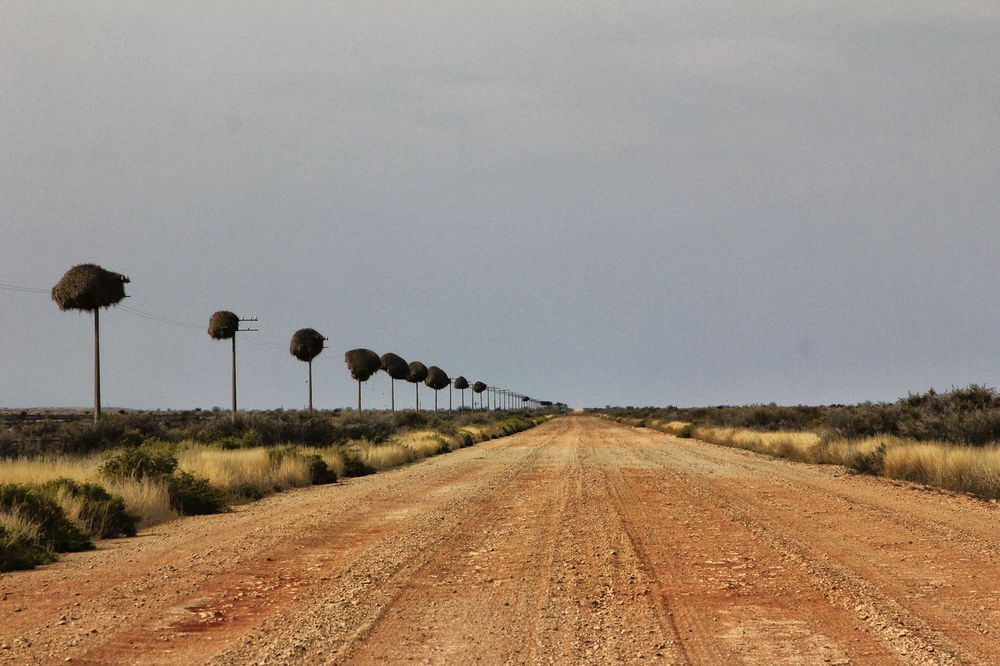 The R383 to Putsonderwater, lined by the ‘lollipop’ nests of thousands of social weaver birds. Photo by Chris Marais.
The R383 to Putsonderwater, lined by the ‘lollipop’ nests of thousands of social weaver birds. Photo by Chris Marais.
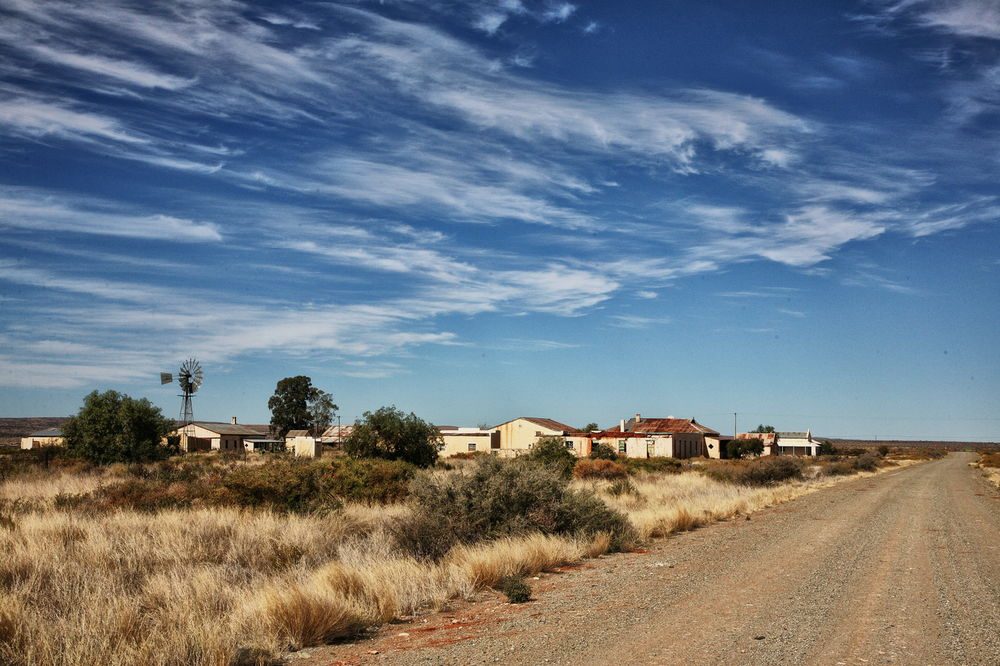 The remains of Putsonderwater Village, once a thriving country community. Photo by Chris Marais.
The remains of Putsonderwater Village, once a thriving country community. Photo by Chris Marais.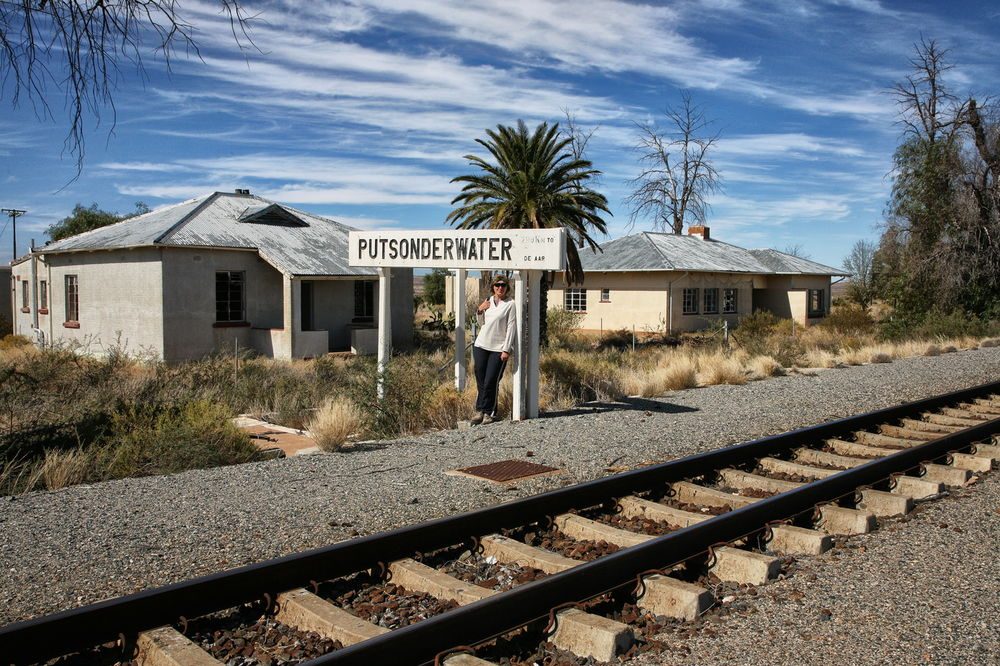 The train does not stop at Putsonderwater Station any more. Photo by Chris Marais.
The train does not stop at Putsonderwater Station any more. Photo by Chris Marais.Up until the early 1990s, Putsonderwater was a notable stop on the railway route between Cape Town and Windhoek, capital city of Namibia. A general dealer, hotel, police station, post office, school and inter-denominational church all thrived here.
In the late 1980s, Putsonderwater won the coveted Lady Duncan Trophy for best country railway station in South Africa. Former station-master Ken Magson remembered the gardens as being particularly beautiful.
“The winters were deliciously cold. The summers were dry and hot. I lived there with my wife and two sons, who went to boarding school in Marydale, about 36 km away,” he said. “Visitors used to come to the station and remark on what an oasis it was. You didn’t laugh at Putsonderwater in my day.”
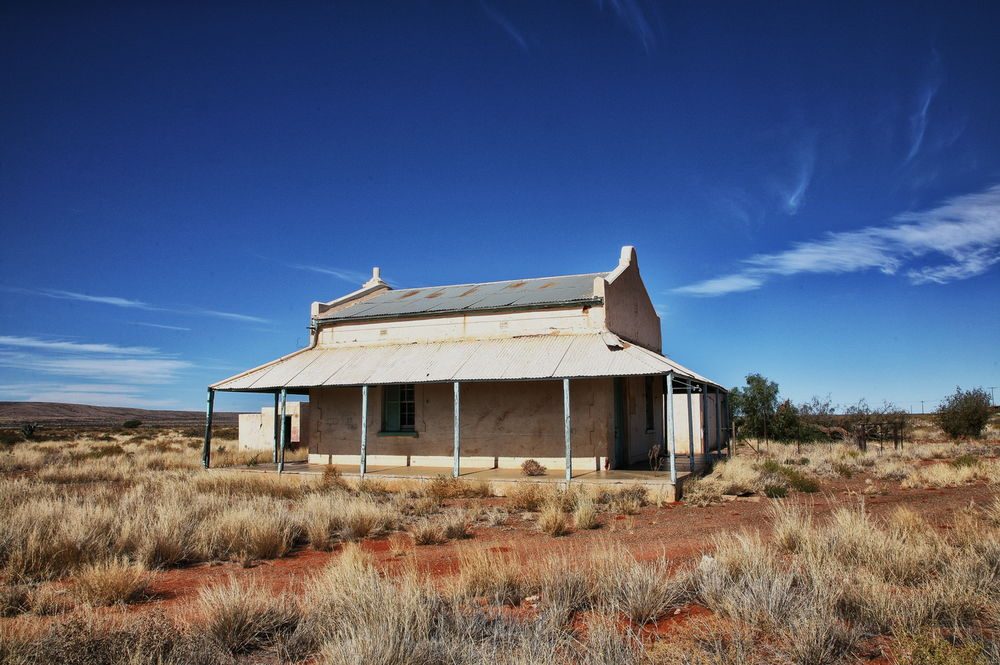
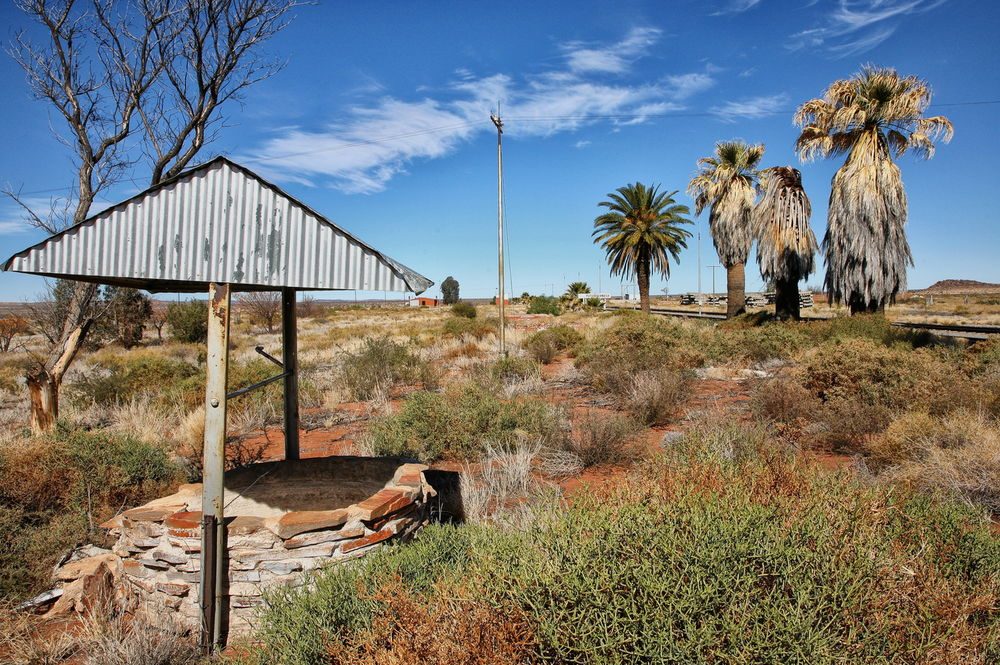 The well at Putsonderwater, which used to feed its villagers and passing steam trains. Photo by Chris Marias.
The well at Putsonderwater, which used to feed its villagers and passing steam trains. Photo by Chris Marias.In such a dry land, a water source would be a great attraction to nomads passing through. Ockhuis, not having a title to the land, was afraid that if everyone found out about the water, he would lose his farm. So every time a trekboer arrived and asked about the well, he would say:
“Ja meneer, ek het ‘n put, maar dit is ‘n put sonder water.” (Yes, sir, I have a well, but it is a well without water.) So the place became Putzonderwater. In later years, the ‘z’ was dropped in favour of the modern spelling.
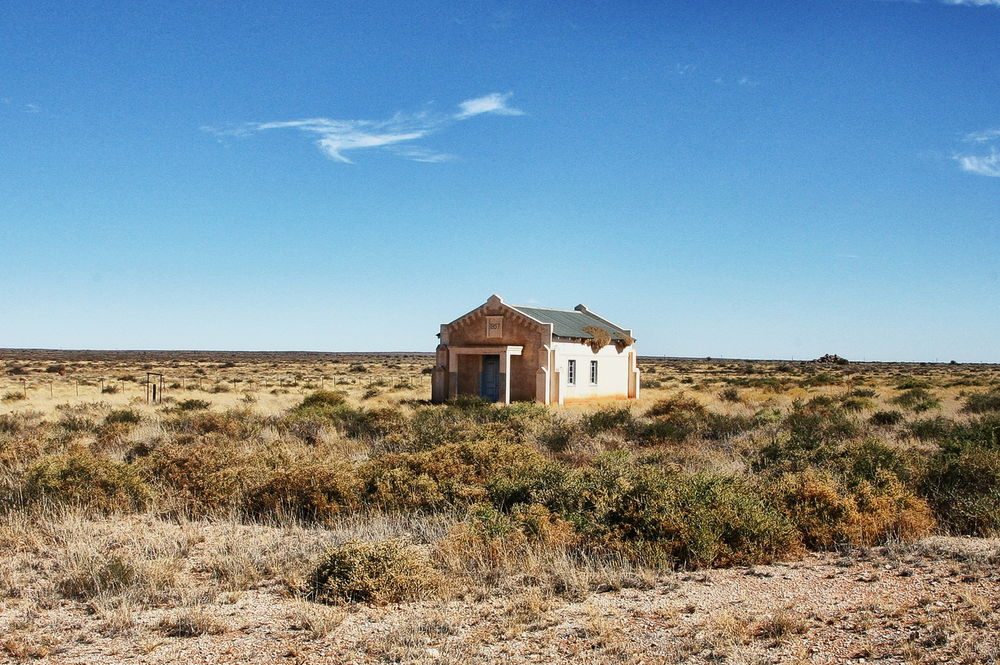 The old inter-denominational church at Putsonderwater. Photo by Chris Marais.
The old inter-denominational church at Putsonderwater. Photo by Chris Marais.